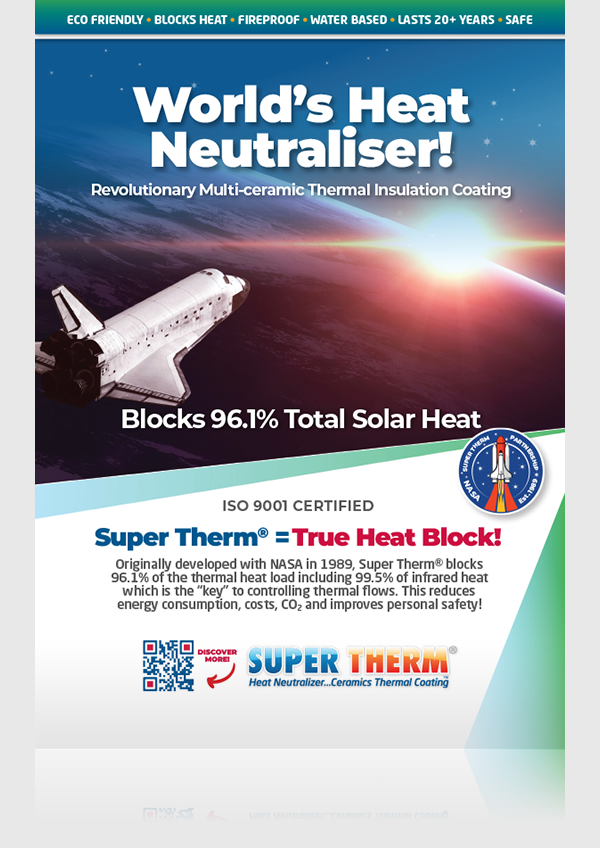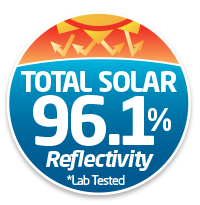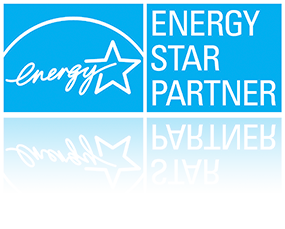Is Super Therm Insulation or Paint?
SUPER THERM an insulation or a paint?
This is a question that came off a thread in 2010 and the response from J.E. Pritchett. Clearly people don’t understand new technology of solar heat block coatings. Read J.E.’s white paper.
Can anyone tell me if they consider SUPER THERM an insulation or a paint? I am confused. I posted a video on my blog if you want to see it. I need to understand if this is worth the type of money they are asking for this type of technology. I plan on using this to insulate ISBU shipping containers.
J.E. response
It is a coating – because it is three times thicker than regular house paint because of the ceramic load. It blocks the initial heat load from radiation. Regular insulation materials are designed to absorb heat and then measure the amount of time it takes for this heat load to conduct through the material to the other side or cool side—this is referred to as the “R” value. SUPER THERM does not absorb heat and load it. It uses the specific ceramic compounds in the make up (four ceramic compounds) to block the UV (3% of the heat), Short Wave or Visual Light (43% of the heat) and Long Wave or Infrared (54% of the heat) from absorbing into the surface of the roof or walls.
The ceramic compounds are designed to be a particular size (to catch the vibration of the heat wave), density to block the absorption of the heat on the surface and crystaline structure to repel off the heat from the surface. The point is: If you do not absorb the radiation heat, there is no heat or reduced heat that is available for transfer to the cool side. This is basic physics. Don’t absorb and you don’t have the problem of heat transfer. All the standard “R” value materials are designed to absorb and then slowly transfer the heat–point is – it does transfer. The “R” is a measure of how fast it does the transfer. So, the point, do not load the heat and you keep the container, trailer, tank, house, etc. cool and when the sun goes down, it is immediately cool again and the A/C cycles off to save tremendous amount of energy. The “R” materials absorbed and are holding the heat and the A/C will fight this well into the night or early morning to stablize the air temperature inside. Again– don’t load the heat – you don’t have heat to transfer and conduct.
J.E.
I appreciate the comments. One thing I would like to make very clear is that SUPER THERM does not nor ever will have an “R” value because of what I said earlier. This is a completely different way of viewing heat controls.
Insulations with R values control heat gain or loss in one way while the blocking of heat absorption onto a surface works in other ways.
I will acknowledge that in earlier videos and reports where people said something about “R equivalent” is not where we want to go. They have said such things because in our current understanding, the R value is the only reference most people have in the heads to relate an effectiveness.
I will say that we have 150 million sq.ft. of tested roofing in Japan as well as around the world to bear our remarks on the effectiveness. The way they do roofing in Japan is to probe the roofing above, below and room temperature before coating and then after coating. I would identify containers specifically in my statements because we asked the specialist with the Florida DOE office to test containers before and after coated to give us a true reading of the results and determine the effectiveness of dropping the temperature inside a container and maintaining this temperature. It was done as well as two other in-field tests to verify results. At first the Florida office was skeptical because of all the “reflective coating comments in the market” and prejudged our performance to be the same. So, starting from this skeptizism, they did the testing and proved to themselves after three separate tests in different parts of the US, that it did drop the temperature inside the containers and helped stablize the ambient temperature inside the container. Because SUPER THERM has been tested for moisture control and hydrostatic pressure resistance, it can block the loading of moisture into substrates. Blocking moisture load is very critical to keeping a substrate dry and better able to control air temperature inside a building or container. Along with the emissivity level and non-absoprtion ability of the ceramics concerning heat (radiation and convective), this all gave a very real control of heat gain and lost.
It is very effective and has proven this through ASTM testing but even more important in the in-field usage and testing performed on facilities and containers. The factual results speak for themselves without bias from the manufacturer of SUPER THERM. It is different in the approach to blocking heat lost and gain, so to compare the SUPER THERM directly to R rated materials is a waste of all our time. The fact remains it does work as does the R materials, each in a different way with a different technology.
J.E.
As to white paint, if white is all there is to need, then the white hood our one’s car would be cool to the touch. It is not white paint, but the ability of the coating to not load the heat. If you touch the SUPER THERM in the sun over a metal structure, it is not hot to the touch. The ceramics used in SUPER THERM repels the heat and blocks heat load — this is the main point as I have said.
J.E.
Most of the R value insulation materials do have a problem with moisture load. I don’t think you are saying they don’t. Moisture and free air flow are major components that harm the effectiveness of these insulation materials. They are also located between studs so that every 16″, you do not have any insulation material for the width of the stud. Also, to compress 6 inches of R value material into a deadair space of 3″ reduces the R value down to one half of the value one thought they got when they installed it. It is based purely on inches and must maintain the thickness to give the R value as they have stated which is not the case in almost all homes across America.
As I said, we are not talking R values with coatings. You continue to bring this up as if I continue to beat the drum, and I have not. This is different technology on how to block heat load which does not involve R values in any form.
Clearly there are all types of heat resistant paints in the market from white to hollow spheres, but all have limits to performance as with all insulation materials. I don’t believe you are arguing that standard insulation materials do not have limitations.
You have been sent professional testing results to review as requested, and I decided to send showing three tests for heat load from the Florida DOE specialist. If you have problems with ASTM results, professional labs and engineers doing testing, there will be nothing more to offer on this blog.
I was checking to find open minds with discussion. My making the statement of comparison with standard insulation materials was prompted by your continued demand for proof of comparison. When you get comments on comparison from areas you don’t like, you claim it cuts into my “cred”. I could claim the same, but this is not where I want to go with this discussion.
J.E.
If you study Energy Star, white rubber can be Energy Star or any product that can achieve a 65% reflectivity.
There are no such thing as “additional points” given – you pass by the percentage you achieve and the material passes the minimum percentage, or it does not.
I now find your information level and comments only combative and not productive. I will get back to productive issues and wish you well.



























